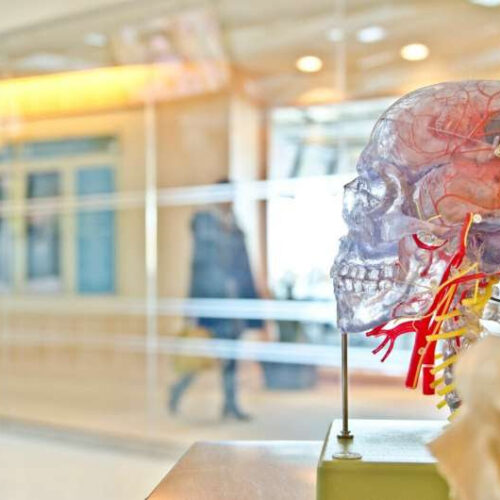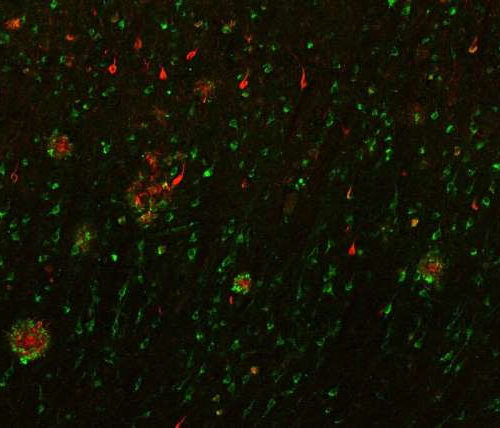LUND UNIVERSITY Alzheimer’s disease is characterized by the abnormal accumulation and spread of the tau protein in the brain. An international study can now show how tau spreads according to four distinct patterns that lead to different symptoms with different prognoses of the affected individuals. The study was published in Nature Medicine. “In contrast to how...
Tag: <span>Alzheimer’s disease</span>
Experimental drug shows potential against Alzheimer’s disease
ALBERT EINSTEIN COLLEGE OF MEDICINE IMAGE: ANA MARIA CUERVO, M.D., PH.D. CREDIT: ALBERT EINSTEIN COLLEGE OF MEDICINE April 22, 2021–(BRONX, NY)–Researchers at Albert Einstein College of Medicine have designed an experimental drug that reversed key symptoms of Alzheimer’s disease in mice. The drug works by reinvigorating a cellular cleaning mechanism that gets rid of unwanted proteins by digesting...
Researchers identify ‘instigator’ gene associated with Alzheimer’s disease
by Mayo Clinic Credit: Unsplash/CC0 Public Domain In a new paper published in Nature Communications, Mayo Clinic researchers and collaborators report the protein-coding gene SERPINA5 may worsen tau protein tangles, which are characteristic of Alzheimer’s disease, and advance disease. By combining clinical expertise, brain tissue samples, pathology expertise and artificial intelligence, the team clarified and validated the relevance of...
To forget or to do not forget?
INSTITUTE OF PHYSICAL CHEMISTRY OF THE POLISH ACADEMY OF SCIENCES IMAGE: NEURONS CREATE A UNIQUE NETWORK THAT IS DAMAGED WHEN AFFECTED BY ALZHEIMER’S DISEASE. CREDIT: SOURCE: IPC PAS, GRZEGORZ KRZYZEWSKI Alzheimer’s disease (AD) is a form of progressive dementia interfering with daily living. It is caused by the decline in the number of brain cells...
TGen identifies gene that could help prevent or delay onset of Alzheimer’s disease
THE TRANSLATIONAL GENOMICS RESEARCH INSTITUTE PHOENIX, Ariz. — April 13, 2021 — Findings of a study by the Translational Genomics Research Institute (TGen), an affiliate of City of Hope, suggest that increasing expression of a gene known as ABCC1 could not only reduce the deposition of a hard plaque in the brain that leads to Alzheimer’s disease, but might...
Power of light and oxygen clears Alzheimer’s disease protein in live mice
by University of Tokyo Credit: Unsplash/CC0 Public Domain A small, light-activated molecule recently tested in mice represents a new approach to eliminating clumps of amyloid protein found in the brains of Alzheimer’s disease patients. If perfected in humans, the technique could be used as an alternative approach to immunotherapy and used to treat other diseases caused...
PLD3 gene contributes to risk of Alzheimer’s disease
by Public Library of Science This image shows the close relationship between phospholipase D3 and the pathological hallmarks of Alzheimer’s disease in tissue from the temporal lobe of a human brain. Phospholipase D3, which is primarily in neurons, is shown in green and neuritic plaques and neurofibrillary tangles are in red stained with thiazine red. Credit:...
Gene therapy using ‘zinc fingers’ may help treat Alzheimer’s disease, animal study shows
MASSACHUSETTS GENERAL HOSPITAL BOSTON – Researchers have used a genetic engineering strategy to dramatically reduce levels of tau–a key protein that accumulates and becomes tangled in the brain during the development of Alzheimer’s disease–in an animal model of the condition. The results, which come from investigators at Massachusetts General Hospital (MGH) and Sangamo Therapeutics Inc., could lead...
Alzheimer’s disease proteins could be at fault for leading cause of vision loss among older people
by University of Southampton Credit: Unsplash/CC0 Public Domain Newly published research has revealed a close link between proteins associated with Alzheimer’s disease and age-related sight loss. The findings could open the way to new treatments for patients with deteriorating vision and through this study, the scientists believe they could reduce the need for using animals in future research into blinding...
Amyloid plaque mutation map opens new avenues for early detection of Alzheimer’s disease
CENTER FOR GENOMIC REGULATION IMAGE: MIREIA SEUMA (LEFT), FIRST AUTHOR OF THE STUDY AND RESEARCHER AT IBEC NEXT TO BENEDETTA BOLOGNESI (RIGHT), ONE OF THE LEAD AUTHORS OF THE STUDY AND JUNIOR GROUP LEADER AT IBEC. CREDIT: THE INSTITUTE FOR BIOENGINEERING OF CATALONIA, IBEC A study published in the journal eLife made all the possible mutations in...







